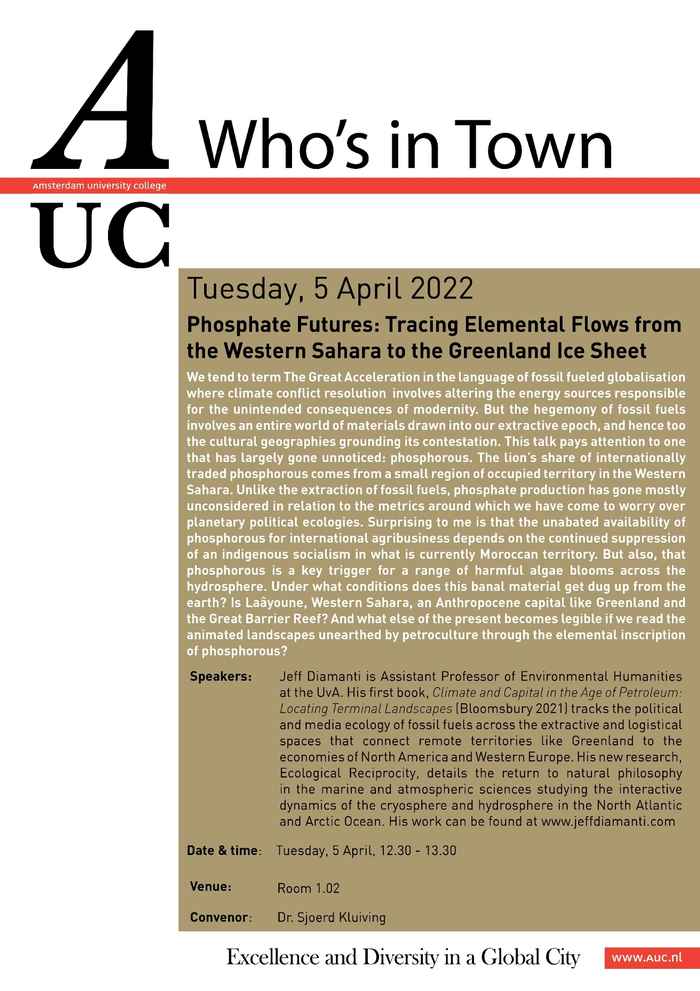WiT: Jeff Diamanti "Phosphate Futures: Tracing Elemental Flows from the Western Sahara to the Greenland Ice Sheet"
- Date
- 5 April 2022
- Time
- 12:30 -13:30
Abstract
We tend to term The Great Acceleration in the language of fossil-fueled globalization. In that story, climate conflict resolution largely involves altering the energy sources responsible for the unintended consequences of modernity. But the hegemony of fossil fuels involves an entire world of materials drawn into our extractive epoch, and hence too the cultural geographies grounding its contestation. This talk pays attention to one that has largely gone unnoticed: phosphorous. The lion’s share of internationally traded phosphorous comes from a small region of occupied territory in the Western Sahara. Without this mineral, industrial agriculture all over the world would slow to a halt. Unlike the extraction of fossil fuels, phosphate production has gone mostly unconsidered in relation to the metrics around which we have come to worry over planetary political ecologies. Surprising to me is that the unabated availability of phosphorous for international agribusiness depends on the continued suppression of an indigenous socialism vying for sovereignty in what is currently Moroccan territory. But also, that phosphorous is a key trigger for a range of harmful algae blooms across the hydrosphere. I ask: under what conditions does this banal material get dug up from the earth? Is Laâyoune, Western Sahara, an Anthropocene capital like Greenland and the Great Barrier Reef? And what else of the present becomes legible if we read the animated landscapes unearthed by petroculture through the elemental inscription of phosphorous?
Speaker
Jeff Diamanti is Assistant Professor of Environmental Humanities (Cultural Analysis & Philosophy) at the University of Amsterdam. His first book, Climate and Capital in the Age of Petroleum: Locating Terminal Landscapes (Bloomsbury 2021) tracks the political and media ecology of fossil fuels across the extractive and logistical spaces that connect remote territories like Greenland to the economies of North America and Western Europe. His new research, Ecological Reciprocity, details the return to natural philosophy in the marine and atmospheric sciences studying the interactive dynamics of the cryosphere and hydrosphere in the North Atlantic and Arctic Ocean. His work can be found at www.jeffdiamanti.com
Convenor
Dr. Sjoerd Kluiving
Venue
- Room 1.02
